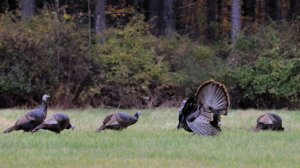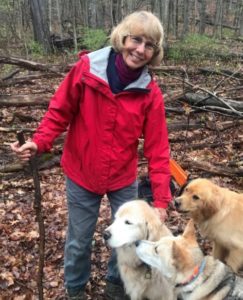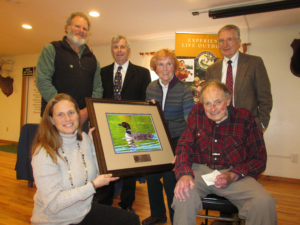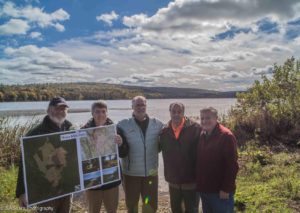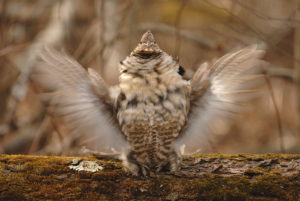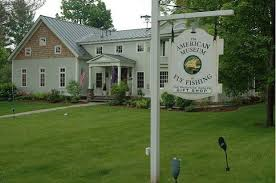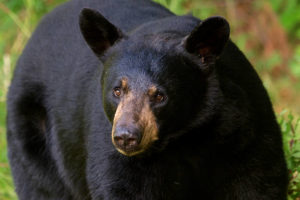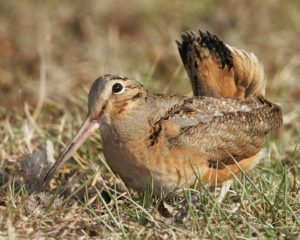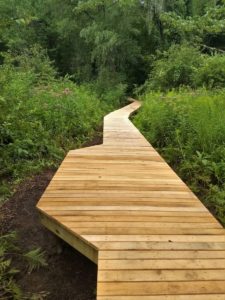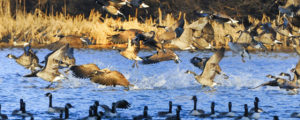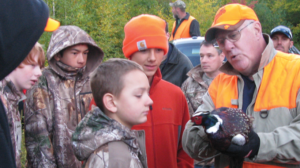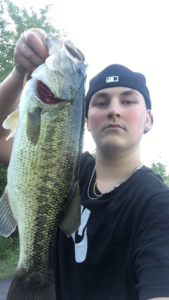Well, here we go again. Tomorrow marks another opening day of shotgun deer hunting season and tonight marks another sleepless night. I’ll be so hyped up about the anticipated thrill and excitement of the hunt that sleep will be next to impossible. Some people count sheep while trying to get to sleep, tonight I’ll count deer.
Inevitably, I’ll be going over my list of things that must be brought tomorrow; gun, bullets, knife, drag rope, hunting license, a fully charged cell phone, etc. Boy, does that 4:00 am alarm come fast.
This year marks my 60th year of deer hunting (with the exception of those years away in school or serving Uncle Sam). While tossing and turning tonight, inevitably, some of those past deer hunts, which evoked vivid memories, will be relived.
I especially remember one year, nearly 25 years ago, when I decided to hunt land in West Stockbridge. Early that morning I left a note telling my wife Jan where I would be hunting. Unfortunately, I saw neither a deer nor fresh track there. Even though there was no snow on the ground, I should have been able to see ruffled leaves, hoof prints in the mud or something that would give an indication that there were deer in the area. Around noontime, I decided to call it a day and go home.
While nearing my street, I started thinking that deer hunting season comes only for a short period once a year. Why am I going home so early? I made a last-minute decision to hunt October Mountain for a couple of hours that afternoon. (I know! I know! I shouldn’t have done that).
I planned to take a stand no more than 100 yards or so down the hill, on the edge of a swamp. (For you old timers, it was behind the remnants of the old fire tower). I didn’t take my backpack for I had already consumed my lunch and coffee. I just carried some shells, the drag rope and knife. What the heck, I wasn’t going that far and could almost see my truck from there. Before reaching the stand, I spotted freshly disturbed leaves and hoofprints and decided to follow them. The leaves were a little crunchy and noisy, but the wind was in my favor so I thought I might be able to sneak up on the deer. After trailing it for about a half an hour, I spotted the deer.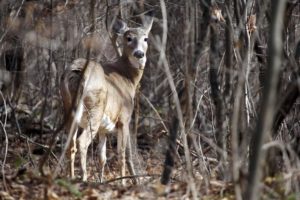
It was standing still in some brush facing the other way. It was a fairly long but makeable shot and I got down on one knee to steady my aim. The only problem was that I couldn’t determine if it was a buck or doe and I didn’t have a doe permit. The size and location of the brush (around its head) was such that I couldn’t make the determination. Another concern was that the slug might deflect off of some of the brush and I would miss it.
I stayed on one knee with gun aimed for a long time, but the deer refused to move. I knew that as soon as I moved, the deer would bolt off. After a while, my legs and arms started aching from being locked in that position, and I couldn’t take it any longer. I dropped to my second knee and, sure enough, it spooked the deer and off it ran. I never did determine if it was a buck or doe.
Oh well, it was getting late (around 3:00 pm) and time to head back to the truck. I back-tracked the best that I could, but every time I tried to go back up the hill, I hit that swamp. Funny, I didn’t remember going through it while tracking that deer, but then again, I was so focused on the tracks that I didn’t pay much attention to the surroundings. I could see the hill that I came down from the truck, but I just couldn’t get across a brook in that swamp to get to it. I tried crossing it several times at different locations, but to no avail. By the time darkness set in, I realized that I was turned around (Not lost!). Great! I thought, my compass was with the backpack in the truck. Fortunately, it was a bright moonlit evening and I could see fairly well.
Even though I was hunting a mountain with which I was somewhat familiar, my heart started pounding indicating panic, whether I liked it or not. Guess what Gene, it told me, you are going to spend the night here.
Oh boy! If I wasn’t home by 8:00pm, Jan would probably call the police, report me missing and tell them I was hunting in West Stockbridge! No way for me to call her for there were no cell phones at that time.
Well, I thought, if I am going to spend the night here, I might as well get out of this swamp, head up the hill behind me, find a big tree to shelter me from the wind and hunker down. Besides, I reasoned, when I get high enough on this hill, I might be able to look east across the swamp, see the tree line in the moon light and perhaps find my way out. It was bright enough out that I could take periodically short walks around the tree to warm up. (Forget a fire, my lighter which I always carry, was also in the backpack).
Every now and then while trudging up the hill, I looked back and tried to see if I could find a passage through that swamp and up the hill to the road. I was hoping a vehicle would drive by on that road and I could see its headlights. No luck.
About half way up my hill, I spotted something shining up ahead. As I neared it, it appeared to look like an automobile, reflecting the moonlight. Strange, I thought, how did someone get a vehicle up here, there are no roads.
As I closed in, the mystery was solved. It was my own truck! Talk about being happy! All that time, I was trying to go the wrong way. What if that deer was a buck and I shot it. I would still be dragging it.
This true event occurred when I was in my 50’s and I am ashamed to say that I made some major blunders. Let’s recap them: Hunting in an area where no one knew where I was; not taking mental notes of landmarks and such as I was trailing the deer; not carrying the compass in my pockets but rather attached to the backpack; not bringing the backpack with me which contained an extra shirt, fire starter, food, etc. Some would even argue that I shouldn’t have been hunting alone to begin with.
Deer hunters please remember
If you harvest a deer during the first week of shotgun deer hunting season, you must bring it to a physical check station to allow biologists to collet important data needed for deer management. During the second week and during the muzzleloader deer hunting season, deer harvested may be reported online. Reporting is required within 48 hours of harvest.
Firearms Safety Course
Pete’s Gun Shop will be having an NRA & Massachusetts State Police Certified Firearms Safety Course next Sunday December 2nd, at the Cheshire Rod & Gun Club in Cheshire, MA. This is to qualify MA residents and non-residents alike for the MA License -To-Carry or FID Card. This will be a hands-on LIVE FIRING, one day course.
Lunch will be provided as well as a give-back of a $10 gift certificate to Pete’s Gun Shop. The cost of $100 covers all ammo, safety gear, class materials, certificates, a hardcover NRA textbook and food. Sign-in is at 8:45am, class starts at 9:00am and it ends around 4:30pm Interested parties should pre-register by calling or stopping in at Pete’s Gun Shop at 413-743-0780, as space is limited.
The Massachusetts LTC is now recognized for concealed carry in 29 states including:
Arizona, Alaska, Alabama, Arkansas, Idaho, Iowa, Indiana, Kansas, Kentucky, Maine, Massachusetts, Michigan, Missouri, Mississippi, Montana, New Hampshire, Nevada, North Carolina, North Dakota, Ohio, Oklahoma, South Dakota, Tennessee, Texas, Utah, Vermont, Virginia, West Virginia, and Wisconsin. Check with Pete’s periodically for new additions.
Residents of Vermont can get the MA Non-Resident LTC by taking this course, and if National Reciprocity passes, they can then take advantage of it.

